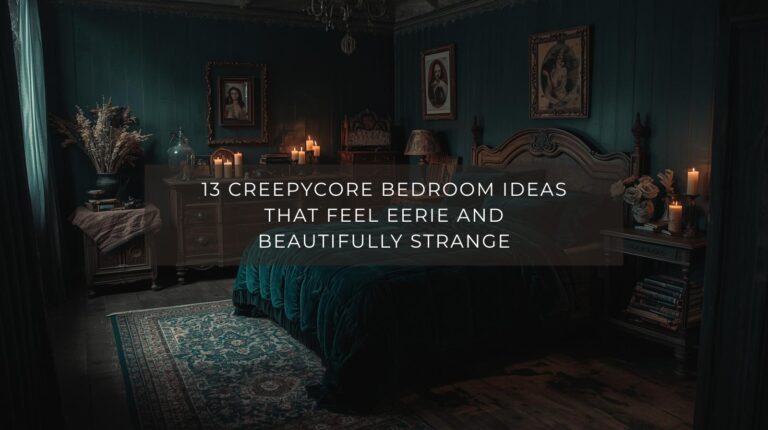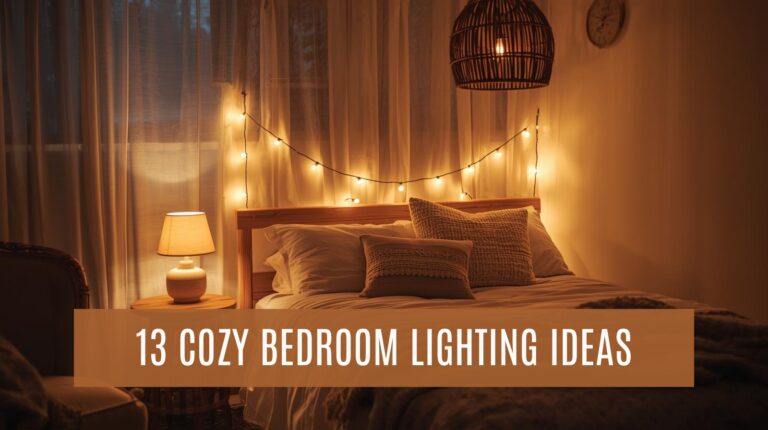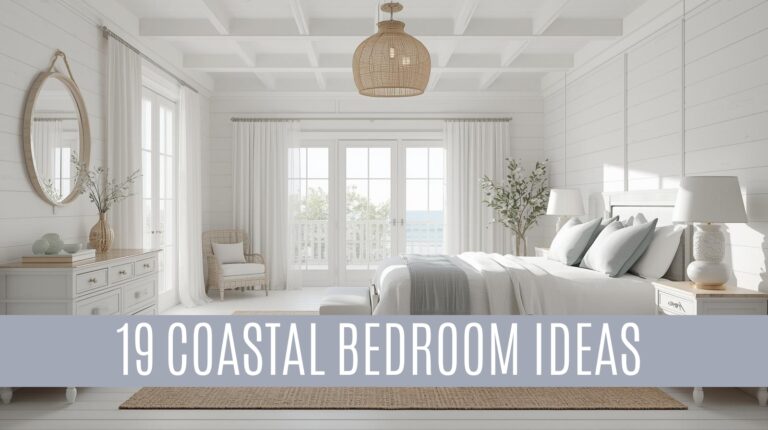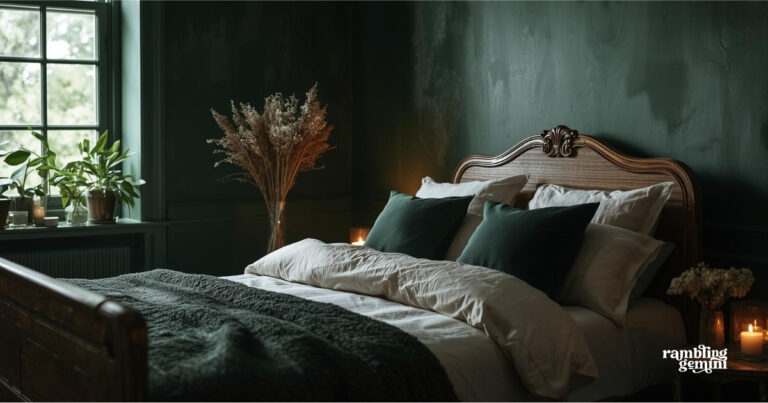29 Budget-Friendly Very Small Bedroom Ideas You Can Try This Weekend
Small bedrooms have a way of showing you exactly how much stuff you’ve been avoiding. I’ve learned that even very small bedrooms can feel calm and comfortable with a few intentional choices. It doesn’t take long before a few piles turn into clutter and every surface feels too full. I’ve been there more than once, wondering how to make a small room feel calm again without spending much.
The good news is that most of what helps doesn’t cost anything. A quick weekend reset can make a cramped space feel lighter, cleaner, and more intentional. You don’t need fancy furniture or a whole new color palette. Just a few simple changes that make sense for the space you already have.
Here are twenty-nine easy, budget-friendly ideas to make your small bedroom feel practical and peaceful again.
Rethink the Space You Already Have
Sometimes the best changes start with what’s already in front of you. Before buying or adding anything new, take a look at how your space works right now. Even in a very small bedroom, small shifts in layout or storage can make a big difference without costing a thing.
1. Declutter and simplify
Before anything else, clear the room. Take out what doesn’t belong or what you don’t use. Small spaces look crowded fast, even when they’re clean. Once you see the bare room again, it’s easier to figure out what actually fits.
2. Rearrange the furniture
Sometimes a room just needs a better layout. Try moving your bed to a different wall or shifting a dresser near the window. You might find a setup that opens the space or lets more light in. It costs nothing, but it can change how the room feels.
3. Use wall space wisely
When the floor feels crowded, take things upward. Wall shelves or hooks keep surfaces clear and make storage easier to reach. It’s a simple swap that gives everything a home without closing in the room.
4. Choose multi-use furniture
If you need something new, look for pieces that do more than one job. A bench with hidden storage or a nightstand with drawers saves space and still looks clean. The fewer pieces you have to move around, the calmer the room feels.
5. Swap bulky pieces for slim ones
Heavy furniture can make a small room feel smaller. If you have the option, replace big nightstands or thick frames with lighter ones. Even a small change, like a table with open legs instead of a solid base, can make the space breathe a little easier.
Style on a Budget
You don’t need to spend much to make a small room feel pulled together. A few low-cost updates can add texture, color, and warmth without changing everything at once. These are the kinds of projects you can finish in an afternoon.
6. DIY a headboard
A headboard adds structure without needing to buy a new bed. You can make one with leftover wood, a scrap of fabric, or even a curtain panel. It’s a small project that gives the room a finished look without much effort.
7. Add a fresh coat of paint
Paint can change the entire mood of a room. Light colors make small spaces feel open, while deeper tones add calm. If repainting everything sounds like too much, try one wall or even just the trim.
8. Use removable wallpaper
Peel-and-stick wallpaper is one of my favorite renter-friendly tricks. It’s cheaper than paint in most cases and easy to take down later. A single accent wall behind the bed adds personality without overwhelming the space.
9. Upgrade the hardware
Changing knobs, drawer pulls, or curtain rods can make old furniture feel new again. It’s a quiet detail that most people don’t notice right away, but it brings a sense of care and intention.
10. Thrift and upcycle finds
Small rooms benefit from furniture with character. Thrift stores and flea markets are full of old mirrors, baskets, and lamps that only need a quick clean or coat of paint. It’s sustainable and adds a mix of textures that new furniture can’t replicate.
Create a Cozy Atmosphere
A small room can still feel calm and inviting. Comfort isn’t about how much space you have but how it feels to spend time there. These ideas focus on light, texture, and small sensory details that make the room easier to relax in.
11. Layer soft textures
Add texture through blankets, pillows, and a rug underfoot. Mix different fabrics like linen, cotton, and knit to make the space feel balanced and lived in. Soft layers help the room feel more welcoming without adding clutter.
12. Use warm lighting
Lighting changes everything. Swap bright overhead bulbs for warm-toned ones or add a small lamp beside the bed. It’s easier on the eyes and helps the room feel calmer at night.
13. Add a small lamp or string lights
A bit of extra light in the corners can make the space feel open. String lights or small bedside lamps are inexpensive and easy to move around until the glow feels right.
14. Bring in nature
Plants make any room feel alive. Even a single pothos or small vase of clippings can soften the edges of a small space. If sunlight is limited, try low-light plants or dried flowers instead.
15. Incorporate scent
A pleasant scent can make the smallest room feel intentional. Try a candle, room spray, or a few drops of essential oil on cotton pads tucked into drawers. It’s a small detail, but it changes how you experience the space.
Make the Room Feel Bigger
You don’t need to knock down walls to make a very small bedroom feel larger. A few simple adjustments in light, color, and layout can open the space and make it easier to breathe. These ideas are quick, inexpensive, and work well in rentals too.
16. Add mirrors strategically
Mirrors reflect light and give the illusion of more space. Try placing one across from a window or lamp to double the brightness. Even a small mirror can make a dark corner feel lighter.
17. Choose light curtains
Heavy fabrics can close in a room. Go for sheer or lightweight curtains that let sunlight through and move gently with the breeze. It instantly makes the space feel softer and more open.
18. Raise curtain rods higher
Hanging curtains closer to the ceiling draws the eye upward and makes the walls look taller. It’s a small trick that adds height without touching the structure of the room.
19. Keep bedding light and minimal
Bulky comforters can make the bed dominate the room. A few breathable layers and neutral colors help it blend in with the rest of the space. It also makes morning cleanup faster.
20. Use a monochrome color palette
When walls, bedding, and furniture share a similar tone, the room feels more open. You don’t need to stick to plain white. Soft neutrals or muted colors work just as well to create a sense of calm and space.
Add Personality Without Clutter
Small bedrooms don’t have to feel plain. The goal is to bring in details that reflect who you are without overwhelming the space. A few intentional touches can make the room feel finished but still peaceful.
21. Use art in sets of two or three
Smaller pieces grouped together create balance without crowding the wall. Choose simple frames or colors that connect with your bedding or rug. It keeps the look cohesive and personal.
22. Add a statement throw pillow or blanket
One bold accent does more than a pile of small ones. Pick a color or texture that stands out and let it be the focus. It’s an easy way to refresh the room when you’re ready for something new.
23. Display small decor on trays
Trays help keep small items contained so they look intentional instead of scattered. Use one on your nightstand or dresser for jewelry, candles, or books. It’s an easy habit that keeps surfaces clear.
24. Add a rug to define space
Even a small rug changes the energy of a room. It softens hard floors, adds warmth, and helps anchor the furniture. Go for something simple if your room already has a lot of color.
25. Use a pegboard or grid wall
These make storage practical and personal at the same time. You can hang plants, photos, or everyday essentials without taking up shelf space. It’s functional but still creative.
Weekend Projects That Make a Difference
Some changes take more effort, but they’re worth the time. These are small weekend projects that give your room new life without needing a full renovation. A few hours of work can leave the space feeling refreshed and more your own.
26. Refinish or paint furniture
Old furniture can look brand new with a bit of sanding and paint. Lighter colors open the space, while darker ones ground it. If you’re unsure, start with one small piece before tackling everything.
27. Create a mini reading nook
If there’s an unused corner, turn it into a quiet spot. Add a chair, a small lamp, and maybe a shelf or basket for books. It doesn’t take much to make a little space feel like a retreat.
28. DIY bedside table upgrade
You don’t need to buy a new nightstand to change things up. Try using a wooden crate, stool, or stack of vintage books for a creative alternative. It’s practical and adds character.
29. Add a shelf above the bed
A narrow shelf works well for art, plants, or small decor. It draws the eye upward and gives the room a sense of height. Keep it simple so it feels balanced instead of crowded.
Start with One Change
It’s easy to feel stuck when a small bedroom starts to feel too full or too familiar. The trick is to start small. Move one thing, clear one corner, or swap out one lightbulb. Once you see a little progress, it’s easier to keep going.
You don’t need a perfect layout or matching furniture to make a very small bedroom feel right. What matters most is how it feels to wake up there, to breathe, and to rest. Start with one change this weekend and let the rest unfold naturally.






